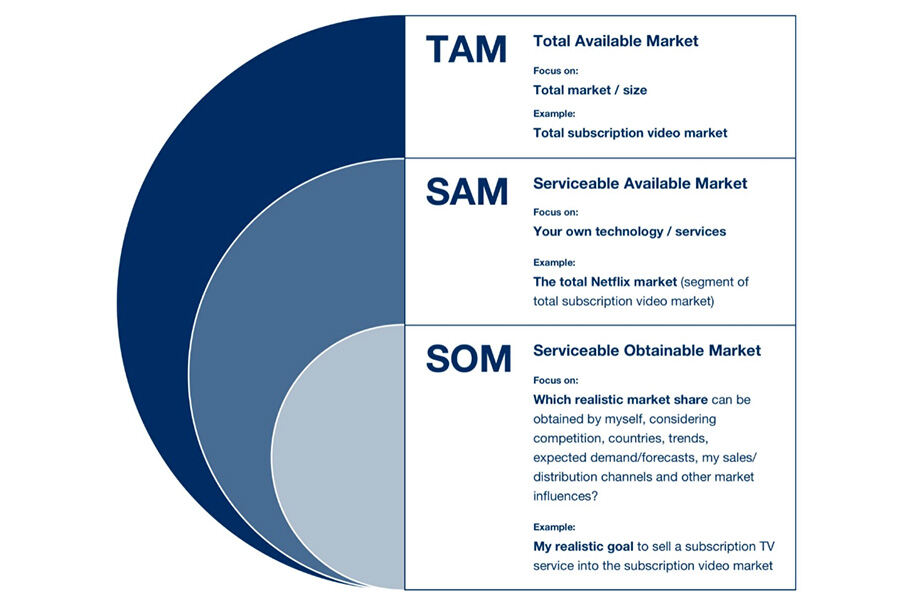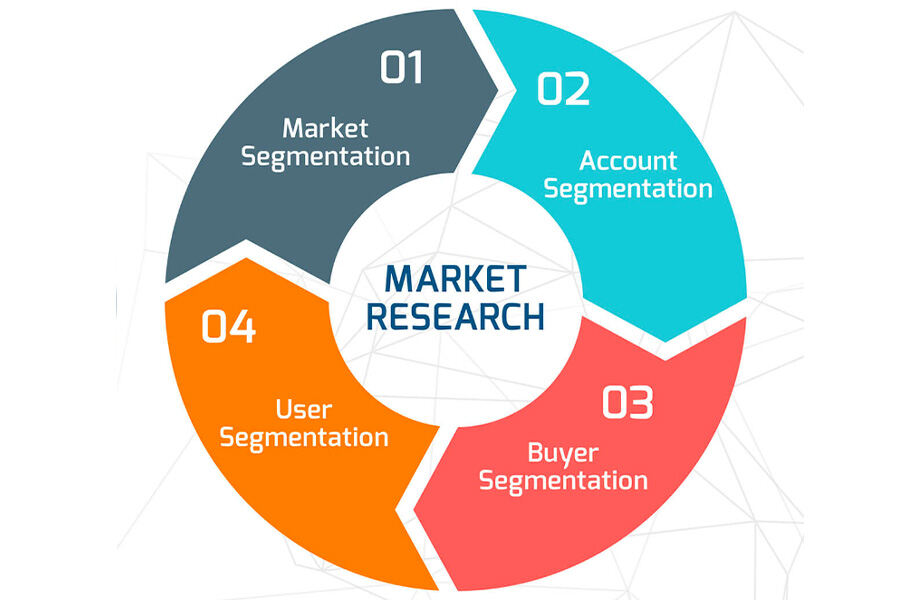The market available to a business or product varies depending on geography, output capability, marketing budget, and other such business concerns. Thus, when thinking about starting a business or setting up a business plan, it is important to work out different possible market shares. These include realistic market sizes for a new company and the total possible market size for future growth. In this way, an entrepreneur can work out if it is worth starting the company or not by using TAM, SAM, and SOM.
Table of Contents
What is market size and why is it important?
What is TAM?
What is SAM?
What is SOM?
Calculating TAM, SAM, and SOM
How to calculate TAM
How to calculate SAM
How to calculate SOM
How to maximize your SOM: tricks of the trade
Conclusion
What is market size and why is it important?
Knowing how much revenue a product could bring in is vital information before starting a business. After all, if a company invests a huge sum of money to develop a product only to realize after that the returns will not cover the expense, then that company can only lose money. To avoid this, an entrepreneur must analyze market size first.
What is TAM?
The total addressable market, or TAM, refers to the total possible market for a product and excludes all limitations, including geographical and distribution. This paints a picture of what could be achievable if the new company grew to have a completely global reach.
What is SAM?
The serviceable addressable market, or SAM, is more realistic than TAM. It refers to the portion of the TAM that your product could realistically reach when considering the limitations of the business, including geographical and distribution limitations. This can give potential investors a better idea of how far a company or product might reach in a relatively short space of time.
What is SOM?
The serviceable obtainable market, or SOM, is the beginning stage. This market size refers to the market a business is aiming to capture when considering its brand values, ideal customer, price points, and limitations. This market size should align with the business’ sales targets and show a profit when factoring in the expenditure.

Calculating TAM, SAM, and SOM
How to calculate TAM
(Number of Accounts in a Market) x (Annual Contract Value)
A certain amount of market research is required to calculate the TAM of a product or business. First, calculate the total number of accounts in the target market. This could be based on businesses if looking at B2B sales, or based on the total number of individual consumers if looking at B2C sales. This information can be found online through various websites on statistics and markets. Second, work out the average annual contract value by looking at the average annual spending of your historical customers. If your business has no historical data, then find this same data for a company with a similar price range, product, SOM, and similar limitations to your business. Finally, multiply the total number of accounts by the average annual contract value to discover your TAM.
How to calculate SAM
(Target Segment of TAM) x (Annual Contract Value)
To calculate the potential SAM of your product or business, simply remove all the customers that you will not be able to service from the TAM and then repeat the process of multiplying that number by the average annual contract value. Remember to remove any potential customers outside of your geographical location, unlikely to buy at your price point, and more.
How to calculate SOM
(Last Year’s Market Share) x (This Year’s SAM)
To calculate the SOM of a business or product, divide the revenue from last year by the SAM from that year. This will give you the market share of your business by percentage (%) for the previous year. Following this, multiply the market share (%) by the SAM for this year to achieve your SOM. These types of calculations can only ever be estimates, but the more market research is carried out, the more accurate they will be.
How to maximize your SOM: tricks of the trade
Maximizing your SOM is largely to do with doing your market research and knowing your brand. You will need to:
- Have a clear brand voice with defined USPs: Make sure your customers know who you are and what you stand for by using defined branding, marketing strategies, and captivating images. This is a great way to create repeat sales and customer loyalty.
- Outprice the competition with great sourcing: Offer better deals to your costumes through smart pricing and great sourcing. Use specialist e-commerce sites like Alibaba.com to get great deals on your products.
- Building customer loyalty with great service: Remember to increase your average annual contract value by keeping your customers. Offer great deals, loyalty programs, and more.

Conclusion
Knowing your market potential is one of the first steps to address before starting a business or launching a new product. Although potential market share and total market size are different things, both need to be considered.
For example, when launching a product, a business needs to know how much money it can make in the short term (SOM), once the product is a little more established (SAM), and if it exploded as a global business (TAM). Knowing the SOM, SAM, and TAM before launching your product or business will help you gather more potential investors, as they will have the necessary data to assess viability. Additionally, it will set you up to have realistic expectations to avoid heavy losses from a lack of understanding of potential profit.



